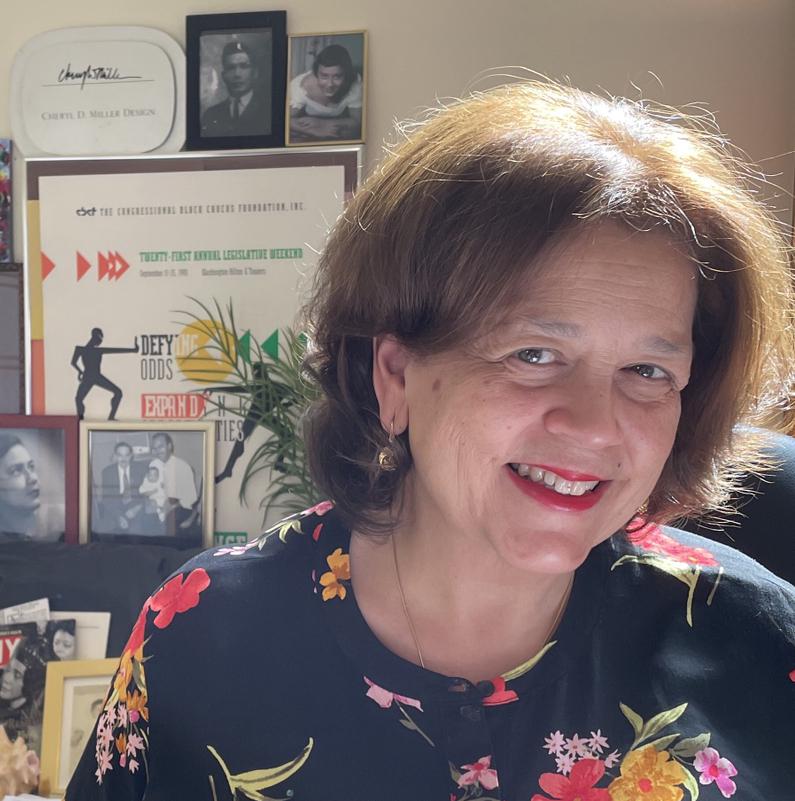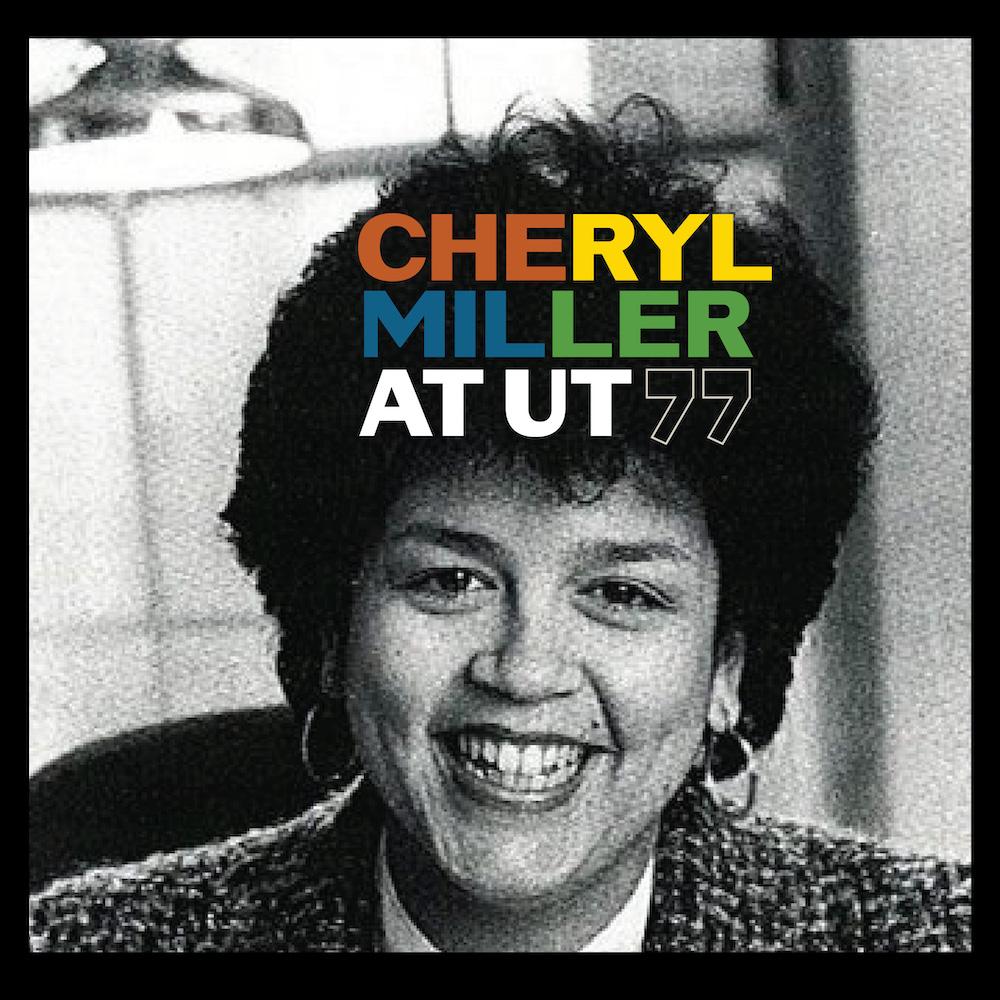
After fifty years of being one of the only Black designers at the table, famed graphic designer Dr. Cheryl D. Miller shares what it means to win a Cooper Hewitt National Design Award in addition to the AIGA Medal. Miller is the only person in history to receive both industry awards in the same year. Additionally, she was named the inaugural Honorary IBM Design Scholar for 2021.
Cheryl, congrats on winning the Cooper Hewitt on top of recently being named an AIGA Medalist. What does this award mean to you?

It gives me the acceptance and the invitation to sit at the Design table at large and gives a greater awareness of my voice of advocacy. It allows more people to hear what I have been about for the last 50 years, so where the award acknowledges my contribution, it gives me a welcome opportunity for a greater, broader, wider audience to hear, from my own words, the advocacy that my life and legacy has been about. It lets more people know that what I live for is very important to all of us in design.
This allows me to foster conversations about the very thing I've been talking about for 50 years. I haven't changed my tune or dance step.
Fifty years of work and one year of acknowledgement. Well, that has a lot of commentary to it…
Does it feel different than any other award you’ve received?
Yes, because in our world there’s nothing else to get; this is the pinnacle. When you have both [awards], the AIGA Medal and the Cooper Hewitt, and you're being recognized for the same vision: the ability to see and to foster and inspire the change that's required… This gives me the stamp of authenticity.
It means a lot because all of it is [the] pinnacle, like two sides of a coin. The quarter is no good unless you can use both sides. These two awards help me do my work, and that's what I'm excited about.
UT has believed in me and invited me to the table before all these awards. Let this be my thanksgiving back. The seeds were planted in good soil.
Professor Kelcey Gray invited you to UT as a visiting lecturer last fall, which evolved into the Distinguished Design Lectureship you hold now. Can you speak a bit to your journey with UT Austin?
I think what's so rich about that story is that Professor Gray saw a lecture where I was featured; she didn't see my lecture. So the meritocracy of my work resounded through a presentation. She wanted to find me for my work. And that's all I've ever had is my work and that excellence.
I didn't have a mentor and all of that to usher me into places. It's always been my work, and so that's a big part of what I want to give the students and the scholars at UT. When you feel like you don't have anything, all you have is your work.
All I have is to teach the scholars what I did. That's it, and hard work, and I want the students to learn because a lot of our community has diverse demographics. They don't know anyone, they don't have networks, so you gotta pop out in front, you have to be competitive in some kind of way.
So I teach how to make good portfolios. My portfolio got me here. Let's do the work, and then presenting it is easy.
View examples of Cheryl D. Miller's work here
What does the term ‘design visionary’ mean to you?
I see clearly the solution to problems that I'm supposed to solve. It doesn't mean I see everything, but the passion of issues that I see. When I can assess a problem, and I see it, I typically have a solution. And then I go about following the path of that vision to provide a solution. I don't see everything; I only see the part that belongs to me to solve.
So “visionary” means that I see how I am to carry the solution to solve the problems that I see today, for tomorrow. I've been at this spot of visionary work my whole life.
Were there any pivotal moments in your life and career that helped foster that vision?
When I got to New York City and I realized how challenging it was for designers of color to make it in “Design Mecca.” If you make it in New York, you can make it anywhere. In that lay of the land I learned a lot about the problem.
Before I moved to New York, I was in Washington. I was raised African American. I've got a rich BIPOC history; I was raised African American in an urban city, and I saw in many ways how we were disenfranchised from the Art and Design community. So I had seen the challenge in the mid-Atlantic, and I felt it in New York City.
I really think I took action in New York City, because I really could see it. More than I could see — I could feel it. And I said, “Well, no, we're gonna do something about this. I don't know what we're gonna do, but we're gonna do something about this.”
Is there something special about UT that made you want to continue teaching with us?

UT’s vision. And SDCT moves quickly.
I've heard and I've read just a few complaints about the lack of diversity, from three alum. It wasn't years of people complaining. There are schools all over this map where the kids are taking professors down and call outs and Instagram walkouts and all kinds of things, and the schools don't change. You all got a signed letter that said, “We would appreciate more diversity.”
If three [Black] alum can offer a suggestion to be more diverse to a broad community that largely services the Latinx Community... three alumni say we could do better, and you move so quickly. I've been at this long, and usually the response from the usual suspect players in the Academy is, We’ll change, but can’t we say the same?
No, change means new. Change means we don't know what this looks like. Change means it doesn't feel or look like anything familiar, and that's an unknown territory that most people and institutions and organizations don't like.
I was a part of “we've got to do something,” and the first thing is to bring in Cheryl Miller. How quickly the response and where you are now this academic year after three people gave a suggestion. And the deans and the administration and the leadership said “Let's do this now, and let's not be afraid of what this looks like.”
So it's my honor to bring my asset of notoriety to a place that accepted me right away. Nobody accepts me right away! So you want to grow quickly, and you invite me quickly… Why would I want to go anywhere else?

